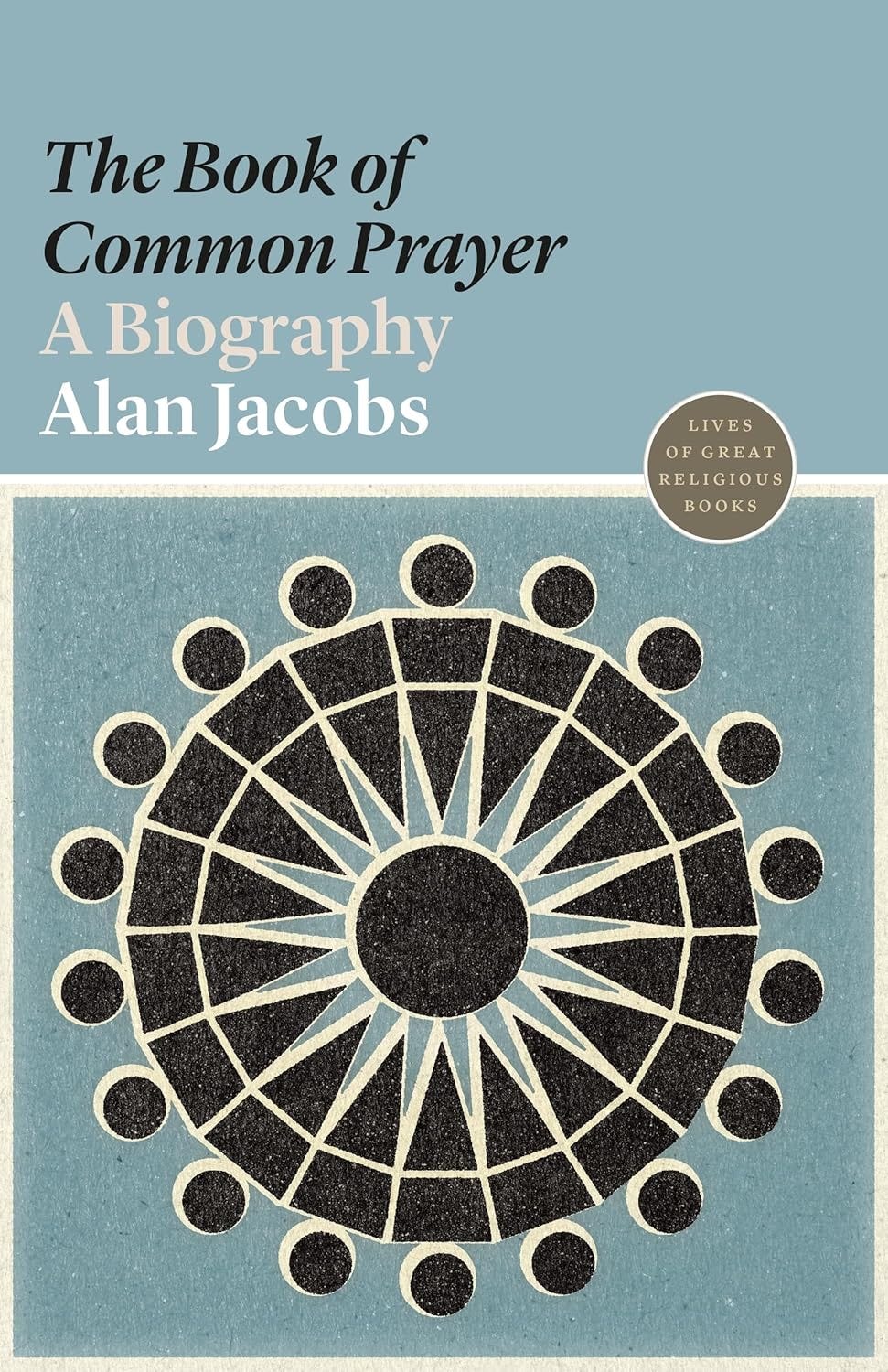On the size, choice, and function of local churches
Plus: common prayer, overdiagnosis, and more
Good morning! It’s Wednesday, and here’s this week’s post.
A take I haven’t written elsewhere
On the size, choice, and function of local churches

My former colleague Matthew Walther, of ye olde The Week dot com, has written an essay for his new(ish) venture, The Lamp, about the nature of the American Catholic parish. Walther is very Catholic and a worthwhile, stylish read, provided I understand what he’s on about, which—owing to the Catholicism—I don’t always.
In this case, however, his reflections are a useful complement and catalyst for a handful of my own recent thoughts on local churches, which are inevitably more tailored to evangelicalism and specifically my corner(s) of the American church:
1. A congregation is not a parish. Walther concedes that the working use of “my parish” by most American Catholics amounts to “where I usually go to church.” But, as he notes, there is a more formal and geographical usage (a usage, incidentally, that is primary for me as someone who grew up in approximately Baptist contexts where we never used the word about ourselves):
Parishes are generally organized on “territorial” grounds; they are part of ecclesiastical geography, a kind of subdivision of dioceses, lines on a map; a given parish “includes all the Christian faithful of a certain territory.”
My Anglican church self-describes as a parish. But in this formal sense, that description is false. I do not think it is a lie but a kind of habit-born anachronism—a nice nostalgia, maybe a defensible expression of hope, but a throwback to a past I do not believe we can revive.
The linguistic habit may linger for a long time yet, but we are demonstrably, cartographically a congregation. We congregate. We come together because we choose to do so, and we try to bind ourselves by something more substantive than routine, but the map is never again coming to our aid. We are congregants who choose to congregate, and calling us parishioners won’t make that any less true.
2. We do not have license to ignore proximity. Walther has no more expectation that the formal parish model will come back for American Catholics than I do for American Protestants, even those who retain the vocabulary. And he’s right to point out that this will not happen because the “old neighborhood” life that undergirded that model no longer exists:
Where is the “old neighborhood” now? Why do we live where we do? And what have we got in common with our neighbors? We reside within our territorial parish boundaries because we have purchased houses there. Most of us have purchased those houses because we could afford them, because of their proximity to our work; most of us do not have a meaningful organic relationship to our postal addresses. […] Absent [the “old neighborhood”] conditions, it is difficult to imagine how we would recreate the spiritual benefits that they made possible.
Maybe I am dipping into hopeful nostalgia of my own here, but I am not ready to give up on insisting that physical proximity still matters and can still, to a degree, be made to matter.
Granted, most of us won’t have a true neighborhood church with its casual, unplanned interactions and opportunities for mutual aid. I get that. I’ve lived that shift in microcosm: My church in Minnesota came about as close to that as is possible in our era, and it was wonderful. But when we moved to Pennsylvania, we simply couldn’t replicate what we’d had. Our church here draws congregants from at least 30 minutes away, and I’ve heard there’s someone who comes all the way from West Virginia. Many of our good friends live clear across the city, and it is what it is.
But still I want to know my church neighbors. I try to find out who’s on my side of town, to make sure I sign up for their meal trains, to have them over for Sunday lunches and Saturday dinners. It’s easy to wave away the value of this kind of thing, to assume we can all coordinate over text and just gut out the 20-minute car rides. But in practice there is a lot to be said for having someone who knows and cares about you a 3-minute walk away. Churches should not give up on that.12
3. There are many merits to a midsize church, especially now. Walther has a whole Costco plan, and—you know what, you just have to go to the essay and read the Costco stuff yourself. It’s distinctly Catholic, but there’s a resonance between his idea and what I want to say about numbers. Walther again:
“The extension of Christianity to an immense multitude,” said Cardinal Danielou, “was held back during the first centuries by the fact that the social cadres and cultural forms of the society in which it operated were hostile to it.” Asking ordinary men and women to remain faithful to Christ and His Church in the absence of a social structure capable of accommodating them required “a strength of character of which the majority of men were not capable.”
Megachurches are booming in America even as the average church is shrinking and church closures are on the rise. But megachurches reach a tipping point3 at which they become fundamentally ill-suited to discipleship; in the worst case, you get megachurch leaders offering AI chatbots modeled on themselves to congregants whom they do not and cannot actually pastor.
And small churches can be very good—again, this is what we had in Minnesota—but they are also difficult. Everyone must volunteer all the time. It is hard work, especially when you have young kids. It can feel like you never quite have the critical mass of people you need to get practical tasks done, let alone to cultivate the kind of norm-setting social structure Walther describes.
I don’t want to exaggerate the polarized situation with church size in America; there are still many midsize congregations that can maintain that critical mass without risking the temptations of the megachurch. And of course it’s not always possible to choose a church with an ideal size, and congregation size is not the most important consideration, and every church must start small. But, with all due caveats, if you can go to a church with adult members in three figures, not two or four or more, I say do.4
4. One particular merit is the capacity to promote from within. Walther once more:
A century ago American Catholics could be and often were served by priests who had grown up in the parish […] and the pastor was, in a very real sense, the shepherd of his flock. Whatever else can be said of him, he certainly had the smell of the sheep.
I’m running long, so I’ll be brief here: A church with that critical mass of members can support more than one clergy role, and that means it can give clergy the opportunity to grow and advance without uprooting themselves. I increasingly think that this is quite valuable and that the common assumption that a talented and ambitious pastor may well have to move cross-country for a new role is misguided.
Sometimes such a move will be necessary. But as a default, that model is bad for pastors themselves and, in Protestant contexts, their families. And it’s bad for congregants too, communicating that it is not such a big deal to uproot oneself from church and friends. If even the pastor’s doing it …
5. Conversely, catechesis can thin the herd. This is a point I’m stealing from my husband, because it is a good one. If a church is moving past critical mass toward that tipping point, past hundreds toward thousands, one good and time-honored approach is to self-replicate, to plant another church nearby and send some people there.
But another good approach might be get around to preaching a hard but needed word. Something on money, sex, or violence would probably do the trick: solid food for those who need it, and only hands ready for the plow.
Intake
The Book of Common Prayer: A Biography, by Alan Jacobs
The Anatomy of Murder, by Dorothy L. Sayers et al.
Between lectures I looked at some of the theological books on sale in the hall. Most seemed to me totally incomprehensible. Obviously doctrinally and philosophically they would be well above my understanding, but it seemed that the sentences themselves were incomprehensible, a string of polysyllabic words strung together from which I could get no meaning. Theology like other professions has its own obscurantism. The problem is surely that theology should impinge on the lives of ordinary non-theologians if it is to have influence. Surely it can sometimes be written in language the intelligent lay man or woman can understand.
“Trump’s attack on the courts channels the worst of Theodore Roosevelt,” by Damon Root for Reason
“Christianity was ‘borderline illegal’ in Silicon Valley. Now it’s the new religion,” by Zoë Bernard for Vanity Fair
“Immigration’s complicated costs for my town—and my soul,” by Carrie McKean for Christianity Today
Output
New work:
Overdiagnosis is a medical problem—and a spiritual problem, too | Christianity Today (unlocked link)
Familiar & likely to fail | Defense Priorities (newsletter)
Newly relevant work:
Yep, back to this again—just a light selection this time, an amuse-bouche, if you will:
There is no president who is righteous, no, not one | Christianity Today, July 2024
This is the executive war-making the founders tried to prevent | Reason, January 2020
How Democrats can really resist Trump | The Week, July 2018
This is not an implicit endorsement of the multisite megachurch with neighborhood “campuses,” each with their own big screen to livestream the pastor.
It is an implicit endorsement of maintaining and fleshing out the church directory. Look, we all know it’s going to be an app now, so let people easily share more and more useful info. An address is fine, but put in the neighborhood name too—don’t make me Google Maps it. Also, what about a discrete asterisk if you’re single and looking for marriage?
I’m trying to be generous here, but megachurches are typically defined as 2,000+ people (whether members or average Sunday attendance), and while I want to allow for the possibility of a meticulously federated system of good pastoral care and instruction, in almost every case, I think the possibility of meaningful individual or familial discipleship for most of a group of 2,000+ people is basically nil.
I wrote a whole chapter on choosing churches in A Flexible Faith.






I think your closing statement hits it. That's why I like you. The plow is the real work of the kingdom. A key to it all is daily fellowship. That is the essence of the first century church. Is Jesus mentioned everyday? Is He the focus in all that we do? I am semi-retired and work in coffee shops and will have a meal at a restaurant bar. I meet believers and unbelievers alike and have learned to engage people where they are. I put my foot in my mouth and apologize, and I treat all believers in Christ in line with Jesus prayer in John 17. Wher I hear blasphemy or exaltation of men, I speak what is true if I think they can hear it. Home groups can be the best approach but connection with a church keeps us humble and is important to me.
Excellent analysis